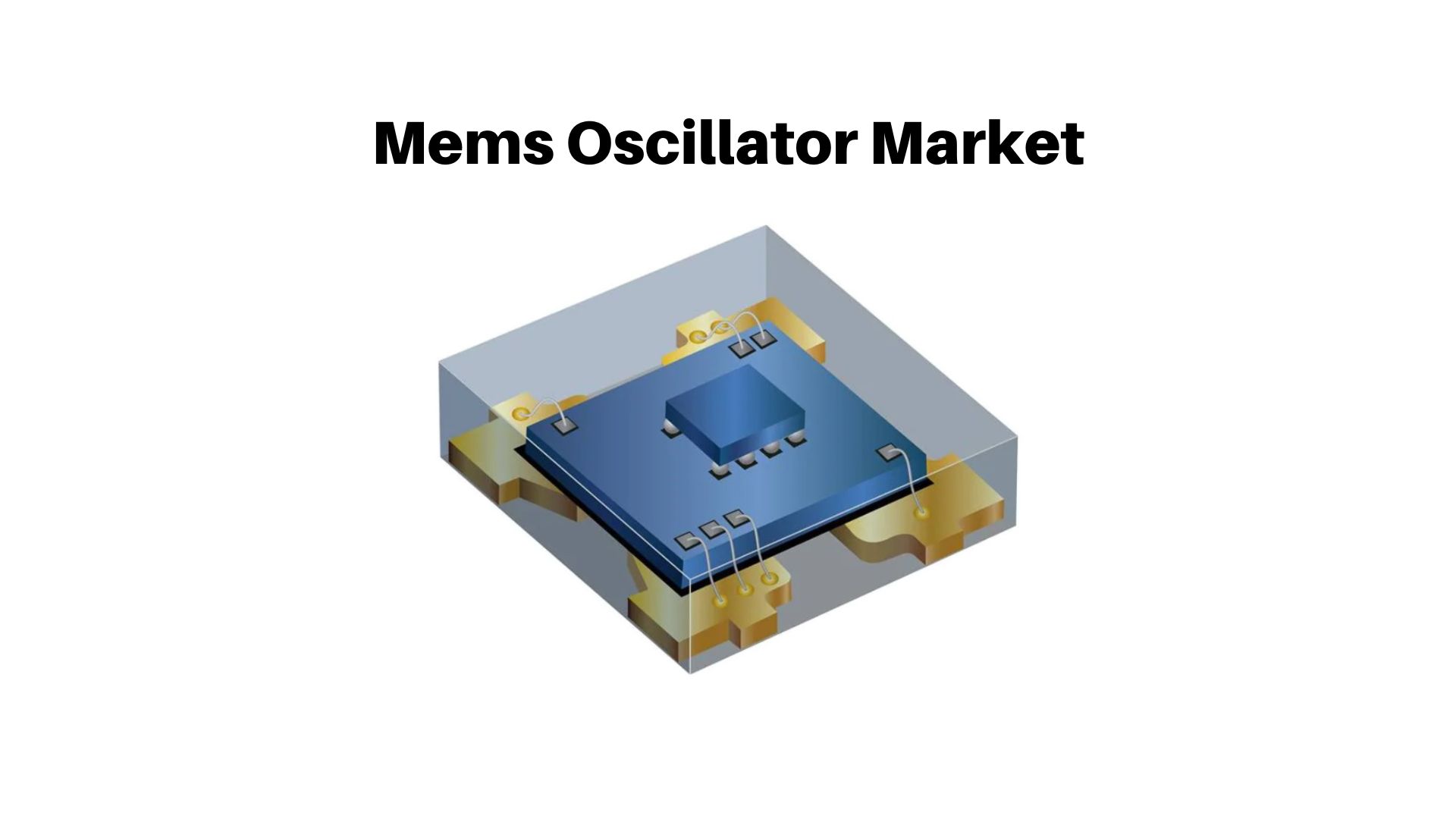Mems Oscillator Market Value Surge at 46.08% CAGR By 2032

Page Contents
Market Overview
The Mems Oscillator Market size is expected to be worth around USD 35,523.44 Mn by 2032 from USD 802.8 Mn in 2022, growing at a CAGR of 46.08% during the forecast period from 2022 to 2032.
The MEMS (Micro-Electro-Mechanical Systems) oscillator market is expected to grow at a rapid pace in the coming years. This growth can be attributed to the increased demand for mobile phones, tablets, wearables, and other electronic devices that use high-precision timing components. Moreover, advancements in microfabrication technology have led to the development of miniaturized and efficient MEMS oscillators that are more reliable and cost-effective than traditional quartz crystal oscillators.
Additionally, there has been a surge in demand for internet-of-things (IoT) applications that require low-power consumption and high-accuracy timing devices. The MEMS oscillator market is poised to capitalize on this trend as it offers several advantages over conventional quartz-based solutions. For instance, MEMS oscillators consume less power, occupy less space on circuit boards, and offer better frequency stability under extreme temperature conditions.

Request For Sample Report Here: https://market.us/report/mems-oscillator-market/request-sample/
Key Takeaways
- The MEMS oscillator market is projected to experience significant growth over the forecast period due to increasing demand for miniature timing devices in various applications such as wearables, IoT devices, and autonomous vehicles.
- MEMS oscillators offer several advantages over traditional quartz-based oscillators, such as lower power consumption, smaller size, and improved reliability which have led to their widespread adoption in various applications.
- The market is fiercely competitive, with several major players fighting for market share. Companies such as SiTime Corporation (US), Microchip Technology (US), Vectron International (US), Abracon Holdings (US), Daishhinku (Japan), Ecliptek (US), Jauch Quartz (Germany), IQD Frequency Products (UK), ILSI America (US), Raltron Electronics (US)
- The market is witnessing several technological advancements, such as ultra-low power MEMS oscillators and MEMS-based timing solutions with integrated temperature compensation, which are expected to drive its growth over the coming years.
- The Asia Pacific region is anticipated to dominate the market during the forecast period due to the number of semiconductor and consumer electronics manufacturers located there.
Regional Analysis
- The North American region is a dominant player in the MEMS Oscillator market, thanks to several prominent players present there. The growing demand for MEMS oscillators across various applications such as IoT devices and automotive electronics is fueling market expansion there.
- The European region is a key market for MEMS oscillators, boasting several semiconductor and electronics companies in the area. The increasing adoption of MEMS oscillators across various applications such as industrial automation and telecommunications is expected to fuel growth in this space.
- The Asia Pacific region is expected to dominate the MEMS oscillator market over the forecast period, due to numerous semiconductor and electronics manufacturers in countries such as China, Japan, and South Korea. Furthermore, the growing demand for MEMS oscillators in various applications like wearables and smartphones is fueling market expansion within this region.
- The Rest of the World region is also witnessing growth in the MEMS oscillator market, due to their increasing adoption across various applications such as aerospace and defense. This growth is fuelling market expansion across this region.
Drivers
Miniaturization The growing demand for smaller, more compact electronic devices is propelling the growth of the MEMS oscillator market. MEMS oscillators are smaller and more lightweight than traditional quartz-based oscillators, making them perfect for use in wearables, smartphones, and IoT gadgets. Advantages over Quartz-Based Oscillators MEMS oscillators offer several advantages over their quartz-based counterparts, such as lower power consumption, greater reliability, and smaller size. These factors have propelled their adoption in various applications such as automotive electronics, industrial processes, and telecommunications networks.
Increasing Demand for IoT Devices The rising adoption of IoT devices is propelling the growth of the MEMS oscillator market. MEMS oscillators are employed in these IoT devices to ensure accurate timing and frequency synchronization, which are essential for their proper operation. Automotive Electronics The rising adoption of advanced driver assistance systems (ADAS) and other automotive electronics is fueling the growth of the MEMS oscillator market. MEMS oscillators are used in automotive electronics to provide precise timing and frequency synchronization, which is essential for these systems' proper operation. Technological Advancements The development of ultra-low power MEMS oscillators and MEMS timing solutions with temperature compensation is propelling the growth of the MEMS oscillator market. These advances enable more advanced electronic devices, leading to an increase in the adoption of MEMS oscillators across various applications.
Restraints
High Development Cost MEMS oscillators require a relatively high development cost compared to traditional quartz-based oscillators, which may prove prohibitive for some small and medium-sized businesses. As a result, demand for these oscillators may not exceed what can be afforded. Competition from traditional quartz-based oscillators Although MEMS oscillators offer several advantages over their quartz-based counterparts, quartz-based oscillators still hold a majority in some applications. This competition could act as an impediment to the growth of the MEMS oscillator market. Design Challenges Designing and manufacturing MEMS oscillators can be complex due to their small size and intricate structure, potentially increasing development costs and hindering growth in the MEMS oscillator market.
Limited Frequency Range MEMS oscillators offer a lower frequency range compared to traditional quartz-based oscillators, which may limit their application in certain high-frequency applications, thus restricting the growth of the MEMS oscillator market. Reliability Concerns Although MEMS oscillators offer higher reliability than their quartz-based counterparts, they may still be vulnerable to failure due to factors such as temperature changes, shock, and vibration. This poses a concern in certain applications and could potentially serve as a restraint on the growth of the MEMS oscillator market.
Ask or share your questions, if any, before purchasing this report: https://market.us/report/mems-oscillator-market/#inquiry
Opportunities
Increasing Adoption of Wearables With the growing popularity of wearable devices like smartwatches and fitness trackers, MEMS oscillators are seeing increased use in these electronic components. MEMS oscillators boast low power consumption and small size, making them perfect for use in wearable electronics. Autonomous Vehicles As autonomous vehicles become more commonplace, MEMS oscillators are finding new applications in advanced driver assistance systems (ADAS) and other automotive electronics to ensure accurate timing and frequency synchronization.
5G Technology The adoption of 5G technology has created a demand for more sophisticated electronic devices. MEMS oscillators can be utilized in these 5G-enabled gadgets to ensure accurate timing and frequency synchronization, opening up new market opportunities for MEMS oscillators. Industrial Applications MEMS oscillators can be employed in a range of industrial applications, such as process control and automation, providing precise timing and frequency synchronization. With the growing adoption of Industry 4.0 technologies, there are now even more opportunities for MEMS oscillators in these industrial settings.
Advancements in Technology Recent developments in MEMS oscillator technology, such as ultra-low power MEMS oscillators and MEMS timing solutions with temperature compensation, have created new opportunities for MEMS oscillators across a variety of applications. These improvements enable more complex electronic devices which in turn fuels demand for MEMS oscillators across numerous fields.
Challenges
Quality and reliability concern MEMS oscillators are expected to have high quality and reliability, especially in critical applications such as aerospace and defense. However, achieving high quality and reliability can be challenging due to factors such as manufacturing processes and the effects of temperature, humidity, and shock/vibration. Ensuring high quality and reliability is a significant challenge in the MEMS oscillator market. Competition from traditional technologies Although MEMS oscillators offer several advantages over traditional quartz-based oscillators, quartz-based oscillators still dominate the market in some applications. MEMS oscillator manufacturers need to compete with established quartz oscillator manufacturers, which can be a challenge.
High development cost The development cost of MEMS oscillators is relatively high compared to traditional quartz-based oscillators. This high cost can be a significant challenge for small and medium-sized businesses that want to enter the MEMS oscillator market. Limited frequency range MEMS oscillators have a limited frequency range compared to traditional quartz-based oscillators. This limitation can be a challenge in some applications that require high-frequency oscillators.
Intellectual property issues MEMS oscillator manufacturers need to protect their intellectual property to prevent infringement by competitors. However, protecting intellectual property can be challenging, especially in international markets, where enforcement is weak. This can be a challenge for MEMS oscillator manufacturers that want to expand their business globally.
Recent Development
- November 2022: Rakon introduces equipment for Hi-Rel Space Master Reference Oscillators. These oscillators have 100ppb frequency stability and are used for GEO telecommunication satellites. This is critical for accuracy, frequency stability, phase noise, and frequency stability. This equipment uses a 3:1 redundancy architecture with output frequencies that range from 5 to 200 Mhz.
- November 2022: SiTime Corp. launched the SiT5503 Elite XTM Super TCXO. This improves timing efficiency in the data centers and 5G infrastructure. By 2024, the potential market for precise timing in communications enterprises is expected to exceed USD 1.3 billion. SiT5503 Elite X Super-TCXO is a unique combination of speed and capabilities that will enable faster, more reliable networks. It targets the USD 200 million market.
- September 2022: Rakon Limited launches the RK409AVNS Ultra Stable Oscillator, (USO), with a high Allan Deviation(ADEV) (2.5 x 10-13). This device addresses the growing need for Low Earth Orbit PNT (Positioning Navigation and Timing) constellations, as well as a critical need for high-accurate frequency out signals.
Report Scope
| Report Attribute | Details |
| The market size value in 2022 | USD 802.8 Mn |
| Revenue forecast by 2032 | USD 35,523.44 Mn |
| Growth Rate | CAGR Of 46.08% |
| Regions Covered | North America, Europe, Asia Pacific, Latin America, and Middle East & Africa, and the Rest of the World |
| Historical Years | 2017-2022 |
| Base Year | 2022 |
| Estimated Year | 2023 |
| Short-Term Projection Year | 2028 |
| Long-Term Projected Year | 2032 |
Key Market Segments
Type
- SPMO
- TCMO
- VCMO
- FSMO
- DCMO
- SSMO
Application
- Network
- Industrial
- Mobile Device
- Military
- Aerospace
- Other
Key Market Players included in the report:
- SiTime Corporation (US)
- Microchip Technology (US)
- Vectron International (US)
- Abracon Holdings (US)
- Daishhinku (Japan)
- Ecliptek (US)
- Jauch Quartz (Germany)
- IQD Frequency Products (UK)
- ILSI America (US)
- Raltron Electronics (US)
Frequently Asked Questions
What is the market study period?
The Mems Oscillator Market is studied from 2017 – 2032.
What is the growth rate for the Mems Oscillator Market?
The Mems Oscillator Market is growing at a CAGR of 46.08%
Which region experiences the highest rate of growth in the Mems Oscillator Market?
Asia Pacific is growing at the highest CAGR over 2022- 2032.
Which region is the largest in the Mems Oscillator Market?
North America holds the highest share in 2022.
Who are the major players in the Mems Oscillator Market?
SiTime Corporation (US), Microchip Technology (US), Vectron International (US), Abracon Holdings (US), Daishhinku (Japan), Ecliptek (US), Jauch Quartz (Germany), IQD Frequency Products (UK), ILSI America (US), Raltron Electronics (US)
The team behind market.us, marketresearch.biz, market.biz and more. Our purpose is to keep our customers ahead of the game with regard to the markets. They may fluctuate up or down, but we will help you to stay ahead of the curve in these market fluctuations. Our consistent growth and ability to deliver in-depth analyses and market insight has engaged genuine market players. They have faith in us to offer the data and information they require to make balanced and decisive marketing decisions.



